Home » Posts tagged 'banks' (Page 6)
Tag Archives: banks
Do Banks Require Savings to Accommodate Demand for Lending?
DO BANKS REQUIRE SAVINGS TO ACCOMMODATE DEMAND FOR LENDING?
There is an emerging view held by many commentators that it is banks and not the central bank that are key for the expansion of money. This way of thinking is promoted these days by the followers of the post Keynesian school of economics (PK).[1] In a research paper by the Bank of England’s Zoltan Jakab and Michael Kurnhof, they suggest that
In the intermediation of loanable funds model of banking, banks accept deposits of pre-existing real resources from savers and then lend them to borrowers. In the real world, banks provide financing through money creation. That is they create deposits of new money through lending, and in doing so are mainly constrained by profitability and solvency considerations.[2]
It seems that for the researchers at the Bank of England and PK followers the key for money creation is demand for loans, which is accommodated by banks increasing lending. In this framework, banks do not have to be concerned with the means of lending, all that is necessary here that there is a demand for loans, which banks are going to accommodate i.e. demand creates supply.
According to the Bank of England researchers,
In the real world, the key function of banks is the provision of financing, or the creation of new monetary purchasing power through loans, for a single agent that is both borrower and depositor. The bank therefore creates its own funding, deposits, in the act of lending, in a transaction that involves no intermediation whatsoever. Third parties are only involved in that the borrower/depositor needs to be sure that others will accept his new deposit in payment for goods, services or assets. This is never in question, because bank deposits are any modern economy’s dominant medium of exchange.[3]
…click on the above link to read the rest of the article…
The Ghost of Failed Banks Returns
THE GHOST OF FAILED BANKS RETURNS
Last week’s failure in the US repo market might have had something to do with Deutsche Bank’s disposal of its prime brokerage to BNP, bringing an unwelcome spotlight to the troubled bank and other foreign banks with prime brokerages in America. There are also worrying similarities between Germany’s Deutsche Bank today and Austria’s Credit-Anstalt in 1931, only the scale is far larger and additionally includes derivatives with a gross value of $50 trillion.
If the repo problem spreads, it could also raise questions over the synthetic ETF industry, whose cash and deposits may face escalating counterparty risks in some of the large banks and their prime brokerages. Managers of synthetic ETFs should be urgently re-evaluating their contractual relationships.
Whoever the repo failure involved, it is likely to prove a watershed moment, causing US bankers to more widely consider their exposure to counterparty risk and risky loans, particularly leveraged loans and their collateralised form in CLOs. The deterioration in global trade prospects, as well as the US economic outlook and the likelihood that reducing dollar interest rates to the zero bound will prove insufficient to reverse a decline, will take on a new relevance to their decisions.
Problems under the surface
Last week, something unusual happened: instead of the more normal reverse repurchase agreements, the Fed escalated its repurchase agreements (repos). For the avoidance of doubt, a reverse repo by the Fed involves the Fed borrowing money from commercial banks, secured by collateral held on its balance sheet, typically US Treasury bills. Reverse repos withdraw liquidity from the banking system. With a repo, the opposite happens: the Fed takes in collateral from the banking system and lends money against the collateral, injecting liquidity into the system. The use of reverse repos can be regarded as the Fed’s principal liquidity management tool when the banks have substantial reserves parked with the Fed, which is the case today.
…click on the above link to read the rest of the article…
Banks Seek Lower Credit Score Requirements, Targeting Over 50 Million New Subprime Borrowers
Banks Seek Lower Credit Score Requirements, Targeting Over 50 Million New Subprime Borrowers
When the next bubble bursts – and it will – be sure to take a look back at this article. It might help explain some things. Lenders, seemingly unhappy with the vast avalanche of debt they’ve issued over the last decade, are now looking to “move the goalposts” in order to be able to lend even more money to even less creditworthy individuals.
Gone are the old days of relying on a consumer’s borrowing history to determine creditworthiness, and instead lenders now look at such bizarre trivia as magazine subscriptions and phone bills to decide how much should be lent to potential borrowers. Banks like Goldman Sachs Group, Ally Financial and Discover are now experimenting with the new metrics.
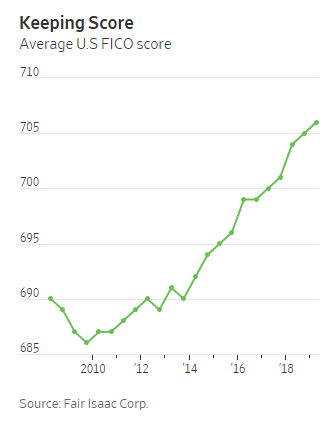
The changes are seismic for many large banks, who spent the last 10 years targeting only extremely credit-worthy borrowers. But, as we all know too well, when that pool runs out the show must go on by any means possible. And that is how we got to no-doc loans and subprime CDOs just before the last bubble burst.
At stake is a lot of potential money: banks are targeting the estimated 53 million U.S. adults that don’t have credit scores and 56 million that have subprime scores. The banks claim that many of these people don’t have traditional borrowing backgrounds, often times because they pay in cash or are new to the U.S. That doesn’t make them bad debt slaves prospects, however. Quite the opposite.
The timing also couldn’t be any better: US consumer debt is higher than ever, as Americans continue to borrow in order to finance everything from cars, college, housing and medical care.
…click on the above link to read the rest of the article…
The Guide To Real History
The Guide To Real History
In the last two centuries, all wars have been machinations orchestrated by bankers pursuing two very simple objectives: profit and a world domination that bears a name: the New World Order.
Education and medias are the main culprits to blame for keeping the important role of bankers in the dark shadows of history. The genuine relevance of Rothschild, Rockefeller, Warburg, Morgan and their peers is voluntarily kept hidden from public scrutiny, so that any investigator that digs in the realms of our past can easily be discredited as a «conspiracy theorist». Author Carroll Quigley once had full access to the Council on foreign relations documents and he confirmed the very real world banking conspiracy designed to dominate the world, in his book «Tragedy and hope».
Bizarrely, education and medias prefer to bring everything back to public figures and politicians like Churchill, Hitler or Stalin, but they will never tell you that these charismatic monsters had no money, nor created it. Hitler was a failed artist that built the most formidable war machine the world had seen in 6 years only, in a near-bankrupt country deprived of any oil production, so do you think he might have had some help?
The Grand Scheme
Before 1971, bank loans were based on their gold reserves, but no bank really owned the value in gold of the money it lent over the years, so the scheme wasn’t very different than today’s fractional system of money creation, in which banks have to own 1/10th of their loans. For example, if bank A has a million dollar, it can lend 10 millions to bank B, which can lend 100 millions to a country, since bank B owns 10 millions. This is basically how the world ended up owing 184 trillion dollars (184 000 000 000 000$) to private banks as of today.
…click on the above link to read the rest of the article…
The Fantasy of Central Bank “Growth” Is Finally Imploding
The Fantasy of Central Bank “Growth” Is Finally Imploding
Having destroyed discipline, central banks have no way out of the corner they’ve painted us into.
It was such a wonderful fantasy: just give a handful of bankers, financiers and corporations trillions of dollars at near-zero rates of interest, and this flood of credit and cash into the apex of the wealth-power pyramid would magically generate a new round of investments in productivity-improving infrastructure and equipment, which would trickle down to the masses in the form of higher wages, enabling the masses to borrow and spend more on consumption, powering the Nirvana of modern economics: a self-sustaining, self-reinforcing expansion of growth.
But alas, there is no self-sustaining, self-reinforcing expansion of growth; there are only massive, increasingly fragile asset bubbles, stagnant wages and a New Gilded Age as the handful of bankers, financiers and corporations that were handed unlimited nearly free money enriched themselves at the expense of everyone else.
Central banks’ near-zero interest rates and trillions in new credit destroyed discipline and price discovery, the bedrock of any economy, capitalist or socialist.
When credit is nearly free to borrow in unlimited quantities, there’s no need for discipline, and so a year of university costs $50,000 instead of $10,000, houses that should cost $200,000 now cost $1 million and a bridge that should have cost $100 million costs $500 million. Nobody can afford anything any more because the answer in the era of central bank “growth” is: just borrow more, it won’t cost you much because interest rates are so low.
And with capital (i.e. saved earnings) getting essentially zero yield thanks to central bank ZIRP and NIRP (zero or negative interest rate policies), then all the credit has poured into speculative assets, inflating unprecedented asset bubbles that will destroy much of the financial system when they finally pop, as all asset bubbles eventually do.
…click on the above link to read the rest of the article…
Why The Next ECB Stimulus Plan May Fail
Why The Next ECB Stimulus Plan May Fail
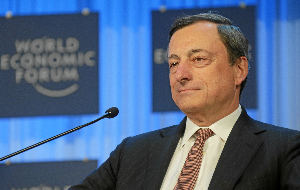
In June 2014 I wrote an article called Draghi’s Plan does not fix Europe. In that article, I explained that the structural challenges of the eurozone -high government spending, excessive tax wedge, lack of technology leadership and demographics- were not going to be solved by a round of quantitative easing.
Now, the evidence of the European Union leads the ECB to hint at another stimulus plan. Gone is the triumphalism displayed by of the European Commission on August 2017 (read). The “strong recovery” they credited to the “decisive action of the European Union” has all but disappeared.
The slowdown in the eurozone is not similar to other economies. The ECB has slashed growth estimates consistently and currently expects a level of growth that is half of what they had projected eighteen months ago.
It is fascinating because many analysts tend to discuss the European slowdown as if the stimulus had been abandoned. Far from it. Let us remember that the European Central Bank repurchases all debt maturities in its balance sheet and that it has launched a new liquidity injection (TLTRO) in March this year.
That is why it is appropriate to discuss the severity of the Eurozone slowdown in the context of the chain of fiscal and monetary stimuli that have been implemented. To understand the serious mistake of constantly stumbling on the same stone, we need to understand the size of the fiscal and monetary programs and their underwhelming results.
- 2008: “Economic Recovery Plan”, 200 billion euros in public spending, infrastructure and “strategic sectors” to create “millions of jobs”.
- 2014 “Investment Plan for Europe”, of which more than 424 billion euro have been mobilized and 77 billion approved. It was going to “increase the GDP of the European Union by 1.3% until 2020″. The GDP of the European Union has been revised down to half of the growth estimated by the ECB nearly two years ago.
…click on the above link to read the rest of the article…
Hong Kong Activist Leader Calls For a Run on the Bank
Hong Kong Activist Leader Calls For a Run on the Bank
Chen Haotian asks citizens to withdraw cash deposits to target Chinese banks.

Prominent Hong Kong pro-independence political activist Chen Haotian has called for a run on Chinese banks, asking that everyone withdraw their money on the same day.
Haotian is a founding member and the convenor of the Hong Kong National Party.
Arguing that large scale protests have only led to injuries and escalating police brutality, Haotian believes another method could be used to severely undermine China’s influence – a good old fashioned run on the bank.
He suggested that another method could be used, namely, impacting the financial system,” reports China Press.
“He called on Friday (August 16) that Hong Kong citizens take out all bank deposits. The primary goal is Chinese banks, but he said other banks should also be targeted, otherwise Chinese banks can borrow money from other banks to solve problems.”
Hong Kong has been rocked by weeks of violent protests by pro-independence campaigners. Earlier this week, riot police stormed Hong Kong International Airport to clear them out.
As we reported on Tuesday, while China is unlikely to invade using PLA troops, experts have suggested that soldiers could be disguised as Hong Kong police.
The Bank’s ‘Stress’ Tests
THE BANK’S ‘STRESS’ TESTS
MY REPORT ON THE BANK OF ENGLAND’S LATEST (NOVEMBER 2018) STRESS TESTS WAS PUBLISHED BY THE ADAM SMITH INSTITUTE ON AUGUST 3RD.
The purpose of the stress tests is, in essence, to persuade us that the banking system is in good shape on the basis of a make-believe exercise which purports to show what might happen in the event of a supposed severe stress scenario as modelled by a central bank with a dodgy model and a vested interest in showing that the banking system is in great shape thanks to its own wise policies.
We are expected to believe that the central bank has managed to rebuild the banking system despite enormous pressure placed on it by the institutions it regulates, whose principal objective is to run down their capital ratios (or equivalently, maximise their leverage) in order to boost their returns on equity and resulting short-term profits, and never mind the systemic risks and associated costs imposed on everyone else or the damage their high leverage did in the Global Financial Crisis.
These latest Bank of England’s stress tests were published in the Bank’s November 2018 Financial Stability Report, the core message of which was that the UK banking system was doing just great, but that a No-Deal Brexit would be a disaster. Wrong on both counts.
I will focus here on the first issue, the state of the banking system.
In essence, the Bank paints a reassuring picture of bank resilience. The message is that the UK banking system is now so strong that it could sail through another crisis that is more severe than the last one and still be in good shape. How do we know this? Because the stress tests tell us, claims the Bank. However, the truth is that the Bank’s stress tests are useless at detecting bank fragility.
…click on the above link to read the rest of the article…
Chinese Banks No Longer Trust One Another As Repo Rates Skyrocket
Chinese Banks No Longer Trust One Another As Repo Rates Skyrocket
For those who have grown bored with the ongoing US-China trade war whose escalation was obvious to all but the dumbest BTFD algos, the biggest news of the past week was that yet another Chinese bank was bailed out by the Chinese government – the third in the past three months – and a substantial one at that: with over 1.4 trillion yuan in assets ($200BN), Hang Feng Bank’s nationalization was certainly large enough to make a dent on the Chinese financial system and on the Chinese Sovereign Wealth Fund, which drew the short straw and was told to bailout the troubled Chinese bank (more here).
Hang Feng’s bailout followed those of Baoshang and Bank of Jinzhou, which means that 3 of the top 4 most troubled banks have now been either nationalized by an SOE or seized by the government, which is effectively the same thing.
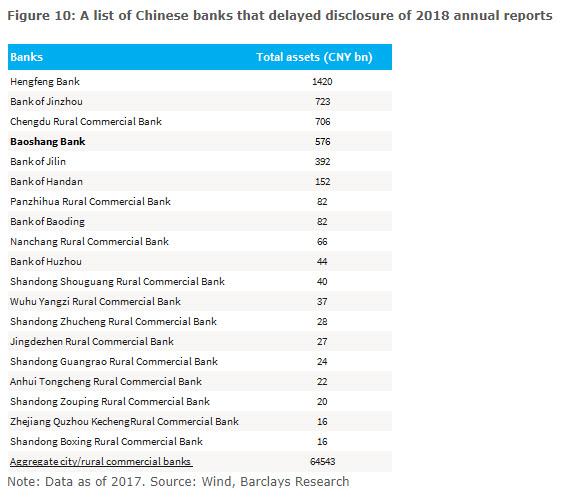
Of course, to regular readers this development was hardly surprising, especially after our post in mid-July when we saw the $40 trillion Chinese banking system approach its closest encounter with the proverbial “Lehman moment” yet, when inexplicably the four-day repo rate on China’s government bonds (i.e., the cost for investors to pledge their Chinese government bond holdings for short-term funding) on the Shanghai exchange briefly spiked to 1,000% in afternoon trading.
While some attributed the surge to a fat finger, far more ominous signs were already present, and in the aftermath of the Baoshang failure, which has sent Chinese banking stocks tumbling, one-day and seven-day weighted average borrowing rates had remained low thanks to huge central bank cash injections – such as the 250BN yuan we described back in May – longer tenors such as the 1 month repo have marched sharply higher.
…click on the above link to read the rest of the article…
Hong Kong Riots Reveal A Looming Crisis At The World’s 6th Largest Bank
Hong Kong Riots Reveal A Looming Crisis At The World’s 6th Largest Bank
Earlier today, in addition to the chaos surrounding the escalation of the US-China trade and currency war, we also got news which slipped under the radar that the CEO of HSBC, one which with $2.6 trillion in assets is the largest UK bank and the 6th largest bank in the world by assets, was unexpectedly quitting and his departure would also lead to mass layoffs, with the bank set to fire 4,000 workers, or about 2% of its workforce.
And while today’s market massacre succeeded in sweeping the HSBC news under the rug, one can’t help but wonder: is HSBC, which has had almost as many run-ins with the law as one particular infamous German bank, going to be the next Deutsche Bank?
For the answer we went to one of our blogging friends who runs the Strategic Macro blog, and who conveniently took a look at some of the cockroaches in HSBC’s basement. What he found was troubling, especially in light of the ongoing turmoil in Hong Kong which at any given moment is just a few minutes away and a false flag provocation away from a Chinese invasion.
Courtesy of the Strategic Macro blog, we present:
HSBC’s exposure to Hong Kong real estate
So conventional wisdom is that post-Basel III the banks hold a lot of capital against loans and are run conservatively. And in a normalised market this is very true I think.
However when you are calculating LTVs and RWAs and PDs against bubble valuation levels, are they still appropriate? If you calculated it against replacement costs, the LTVs would go through the roof, and so would RWAs and the banks would be left with an CET tier 1 equity deficit to be covered by a rights issue. Any losses and higher RWAs on impaired loans would further cost equity.
…click on the above link to read the rest of the article…
A Bank With 49 Trillion Dollars In Exposure To Derivatives Is Melting Down Right In Front Of Our Eyes
A Bank With 49 Trillion Dollars In Exposure To Derivatives Is Melting Down Right In Front Of Our Eyes
Could it be possible that we are on the verge of the next “Lehman Brothers moment”? Deutsche Bank is the most important bank in all of Europe, it has 49 trillion dollars in exposure to derivatives, and most of the largest “too big to fail banks” in the United States have very deep financial connections to the bank. In other words, the global financial system simply cannot afford for Deutsche Bank to fail, and right now it is literally melting down right in front of our eyes. For years I have been warning that this day would come, and even though it has been hit by scandal after scandal, somehow Deutsche Bank was able to survive until now. But after what we have witnessed in recent days, many now believe that the end is near for Deutsche Bank. On July 7th, they really shook up investors all over the globe when they laid off 18,000 employees and announced that they would be completely exiting their global equities trading business…
It takes a lot to rattle Wall Street.
But Deutsche Bank managed to. The beleaguered German giant announced on July 7 that it is laying off 18,000 employees—roughly one-fifth of its global workforce—and pursuing a vast restructuring plan that most notably includes shutting down its global equities trading business.
Though Deutsche’s Bloody Sunday seemed to come out of the blue, it’s actually the culmination of a years-long—some would say decades-long—descent into unprofitability and scandal for the bank, which in the early 1990s set out to make itself into a universal banking powerhouse to rival the behemoths of Wall Street.
These moves may delay Deutsche Bank’s inexorable march into oblivion, but not by much.
…click on the above link to read the rest of the article…
“It Would Be An Earthquake” – Three Chinese Banks Tumble After US Threatens To Cut Them Off From SWIFT
“It Would Be An Earthquake” – Three Chinese Banks Tumble After US Threatens To Cut Them Off From SWIFT
In news that initially did not receive much prominence, on Monday a US judge found three large Chinese banks — reportedly the state-owned Bank of Communications, China Merchants Bank, and Shanghai Pudong Development Bank — in contempt for refusing to comply with subpoenas in an investigation into North Korean sanctions violations. This could open the door for them to be cut off from the US financial system, i.e. SWIFT.
“Should it occur, to say that China will not take that well is as large an understatement as one can conceive of. It would be an earthquake”, commented Rabobank’s Michael Every.
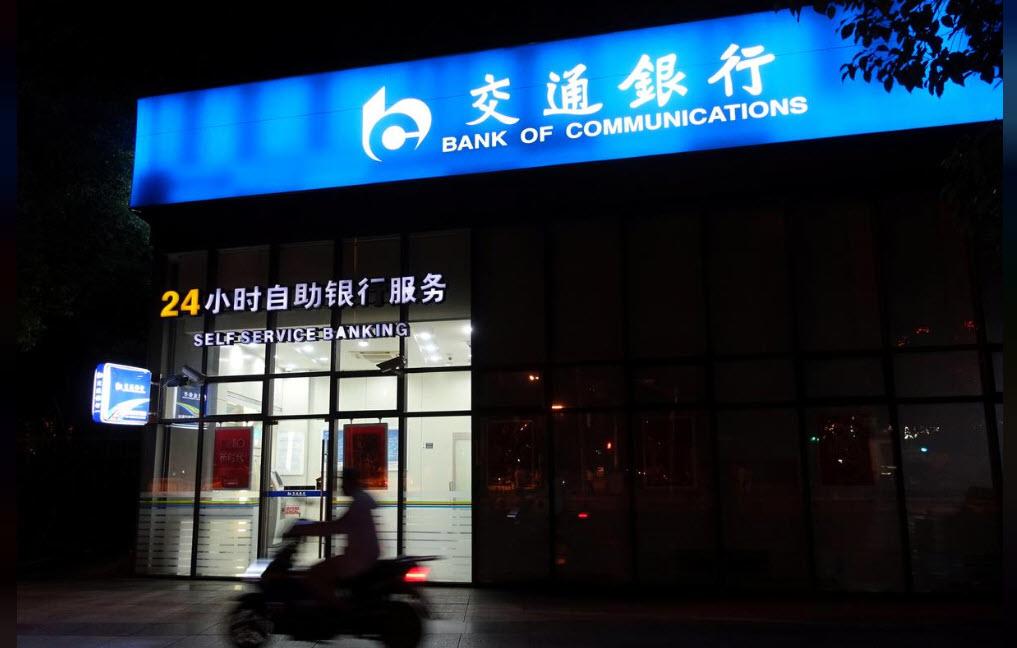
The stunning development follows a May district judge order that three Chinese banks comply with U.S. investigators’ demands that they hand over records connected to the alleged movement of tens of millions of dollars in violation of international sanctions on North Korea. The publicly released court document did not name the banks, the Hong Kong company, or the North Korean entity at that time.
As the WaPo adds, according to a 2017 ruling by the US DOJ, the banks were accused of working with a Hong Kong company, which allegedly laundered more than $100 million for North Korea’s sanctioned Foreign Trade Bank. The newspaper said the bank at risk of losing access to U.S. dollars appeared to be Shanghai Pudong Development Bank, whose ownership structure, limited U.S. presence and alleged conduct with other banks matched with the details disclosed in the court rulings.
Shanghai Pudong Development Bank doesn’t have U.S. branch operations but maintains accounts in that country to handle dollar transactions, the report said, adding the subpoena battle will go before a federal appeals court in Washington on July 12.
…click on the above link to read the rest of the article…
What is Money?
What is Money?
What is money? Although it might seem a straight-forward question, ‘what is money’ is a question which will return a wide variety of answers depending on who you ask. For something taken for granted and used by billions of people every day all over the planet, this is perhaps surprising.
Ask a person on the street about money, and they will most likely reply that money is the banknotes and coins in their wallet or pocket. Ask a central banker about money and they will probably mention cash, bank deposits and legal tender, noting that most ‘money’ is held electronically in banks. The central banker, if they are savvy, might also mention that gold is money, but will probably quote this ‘off the record’.
Ask a commercial banker about money, and if they understand the business of fractional-reserve banking, they will say, also ‘off the record‘, that banks create money out of thin air, taking in deposits and then lending these same funds, and more recently lending money into existence that never existed, thereby creating debt.
Ask an economist for their view on the money question, and the answer might revolve around defining the functions of money in an economy (a store of value, a medium of exchange and a unit of account) and a discussion of which forms of money best perform these functions. The economist might also mention the relative merits of different forms of money, such as fiat currency, commodity-backed money (gold and silver), and discuss terms such as hard money, sound money, paper money, and the characteristics of a desirable money.

…click on the above link to read the rest of the article…
China Hit By “Significant Banking Stress” As SHIBOR Plummets To Recession Levels
China Hit By “Significant Banking Stress” As SHIBOR Plummets To Recession Levels
It’s probably not a coincidence that just days after we reported that China’s interbank market was freezing up in the aftermath of the Baoshang Bank collapse and subsequent seizure, which led to a surge in interbank repo rates and a spike in Negotiable Certificates of Deposit (NCD) rates…
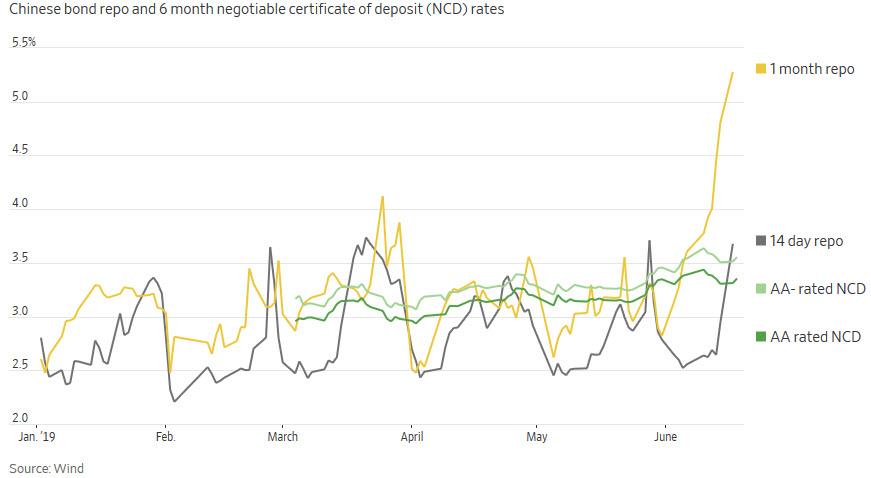
… that Beijing is doing everything in its power to keep liquidity flowing within the world’s largest, ~$40 trillion, financial system.
Case in point: China’s overnight SHIBOR lending rate tumbled overnight, sliding from 1.253%, and 1.924% a week ago, to just 1.11% today. This, as Commodore Research points out, marks the lowest level seen since June 12, 2015.
In fact, the only other time this decade that SHIBOR rates fell to such a low level was back in 2015 (which was a period when China was likely undergoing a recession). Prior to 2015, the previous time that SHIBOR rates fell to 1.11% (or lower) was during the global financial crisis in 2008/2009.
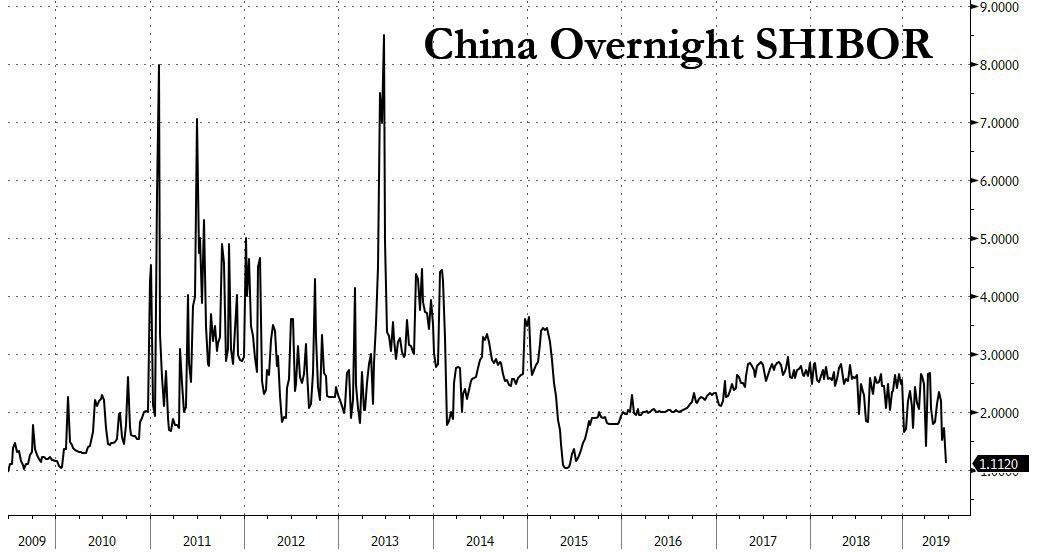
As Commodore further notes, “there recently has remained talk of liquidity problems and banking fears in China (and these concerns have only grown since the Baoshang Bank failure in May). Low SHIBOR lending rates are supportive and accommodative in nature — but rates sitting at rare multi-year lows are likely an indication that China is facing significant banking stress at the moment.”
The report’s conclusion: “It is very rare for the overnight SHIBOR lending rate to be set as low as 1.11%.”
Meanwhile, as the world’s biggest financial time bomb ticks ever louder, traders and analysts are blissfully oblivious, focusing instead on central banks admitting that the recession is imminent and trying to spin how a world war with Iran would be bullish for stocks.
How Central-Bank Interest-Rate Policy Is Destabilizing Banks
How Central-Bank Interest-Rate Policy Is Destabilizing Banks
Broadly speaking, banks operate under the concept of maturity transformation. Banks take short-term – less than one year – financing vehicles, such as customer deposits, and use that to finance long-term – more than one year – returns. These returns range from the most commonly understood loans, such as auto loans and mortgages, to investments in equity, bonds and public debt. Banks make money on the interest spread between what they pay to the owners of the money and what is earned from the operations. Banks also make money on other services, such as wealth management and account fees, though these are relatively small compared to the maturity transformation business.
In terms of assets, the primary asset a bank holds is the demand deposit, also referred to as the core deposit. These are your everyday savings and checking accounts. Banks also sell Wholesale Deposits, such as CDs, have shareholder equity and also can take out debt, such as interbank lending. As these assets are owned by someone else, each of them demands a return for the use of those assets. These are part of the costs of operation for a bank. There are also more fixed operating costs, such as employees, buildings and equipment that must also be financed.
So, a bank will take assets and formulate loans on them. Like most of the world, the US operates on a fractional reserve system, one where banks originate loans in excess of the deposits on-hand. Take a look at the balance sheet of a large regional bank, 5/3 Bank, for example. For the 2018 fiscal year, 5/3 reported non-capital assets of $94 billion and a deposit base of $108 billion. However, the cash and cash equivalent component of these assets stood at $4.4 billion, or just 4% of demand deposits.
…click on the above link to read the rest of the article…




